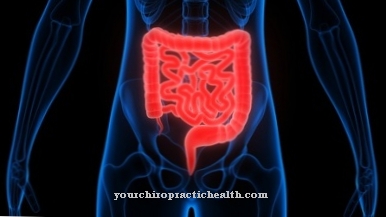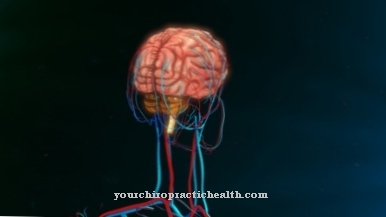A Transdetermination in biology represents the reprogramming of a differentiated body cell. As a rule, the process of differentiation of the body cells from the fertilized egg cell to the fully developed organism is irreversible. Under certain conditions, however, a cell that is determined in its differentiation can be reprogrammed.
What is transdetermination?

Transdetermination means the transformation from one determined state into another determined state.In biology, transdetermination is characterized by the reprogramming of an already differentiated body cell into another differentiated body cell.
In the case of humans and most multicellular animals, the development of organisms begins with the fertilized egg cell. The whole organism develops from this first cell. As the cells divide, the individual cells become increasingly differentiated or specialized in the course of embryogenesis. This is how the organs develop. The liver cells, for example, have the same genetic information as the heart cells. In both cell types, however, the necessary genetic information is retrieved from different genes.
As part of the differentiation, certain genes are shut down by methylation or modification of the histones. Differentiation takes place in that different genes are switched off from cell line to cell line.
During transdetermination, inactive genes are reactivated and the previously activated genes are inactive again. An example would be the complex transformation of a skin cell into a liver cell.
Function & task
The fertilized egg cell is the first cell in the organism. It is the original stem cell of all later highly differentiated cells. Together with the first eight cells, it is referred to as a totipotent stem cell. These first cells are still completely undifferentiated and can each develop into an independent organism.
After the eighth cell division, pluripotent or embryonic stem cells form. These can still transform into the cells of all three germ layers (ectoderm, mesoderm, endoderm). However, they have already lost the ability to develop into independent organisms.
The further development leads to the postembryonic stem cells, which are divided into fetal, neonatal and adult stem cells depending on the stage of development. The postembryonic stem cells already represent different cell lines that can transform into certain organ systems. They too still have differentiation potential, which, however, is only related to certain cell types. They are called multipotent stem cells. For example, neural stem cells can still transform into different forms of nerve cells, but no longer into blood cells.
A Transdifferentiation or transdetermination of the cells is possible. However, it is controversial whether a fully differentiated body cell can be reprogrammed. To do this, the expression of thousands of genes would have to be activated at the same time and thousands of other genes deactivated at the same time, for example to transform a skin cell into a muscle cell. So far it has been assumed that only adult stem cells are still able to do this. Their differentiation potential is even beyond the cotyledon.
The reprogramming usually takes place in two steps. First of all there is a dedifferentiation of the cell. After cell division, the differentiation takes place again in a different orientation. Such a transdetermination takes place within the organism, for example during wound healing. A wide variety of cell types that are required for the healing process develop from adult stem cells.
For medicine, there will probably be excellent prospects in the future as an alternative to today's transplant technology. In this way, diseased organs can be grown directly from their own adult stem cells. Years of drug treatment to limit rejection reactions would be a thing of the past. In various in-vitro studies of cell cultures, a growth factor was used to dedifferentiate and redifferentiate cells.
In the course of stem cell research, it was discovered that stem cells may be able to replace cells that have been destroyed in a heart attack. However, the results also suggest that the healing is not based on the replacement by the trans-determined cells, but on the stimulation of cell growth and cell differentiation processes. Adult stem cells also prove themselves in the regeneration of cartilage and bones.
Illnesses & ailments
In connection with transdetermination, serious illnesses occur again and again. The development of cancer is based on the dedifferentiation of body cells. Changes within the cell can lead to undifferentiated cell division, which can encompass the entire body through the formation of metastases. Causes can be somatic mutations, viruses or out of control cell profilerations during healing processes.
Dedifferentiation can be quick. However, there are also forms of cancer in which the tumor remains differentiated for a long time. However, after the phase of dedifferentiation, there is no further differentiation. The dividing cells are degenerate and move further away from their initial state after each cell division.
The genetic information is also subject to constant change. For example, wound healing is a natural process that is based on transdetermination. Here, adult stem cells transform into differentiated skin cells, connective tissue cells or cells of other types. In rare cases, however, a malignant tumor forms as part of the constant cell division.
The same can happen after immune reactions. Lymphomas are, among other things, an expression of an immune system that has gone out of control.













.jpg)

.jpg)
.jpg)











.jpg)